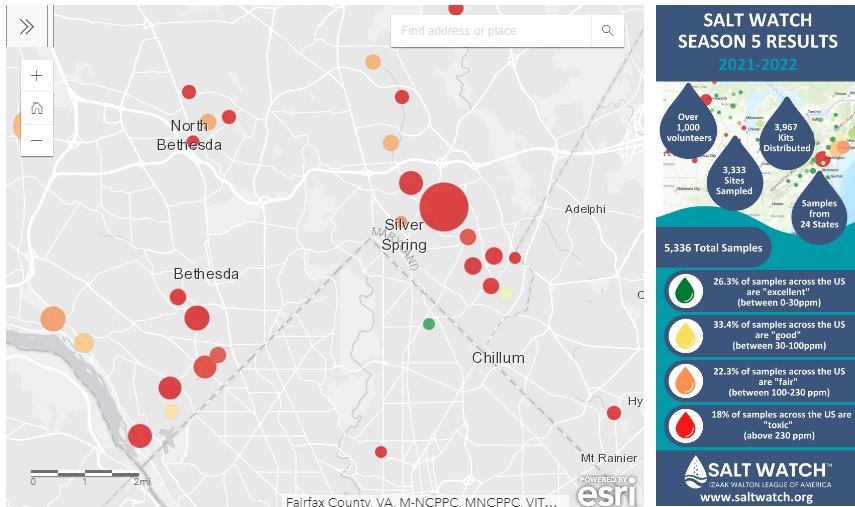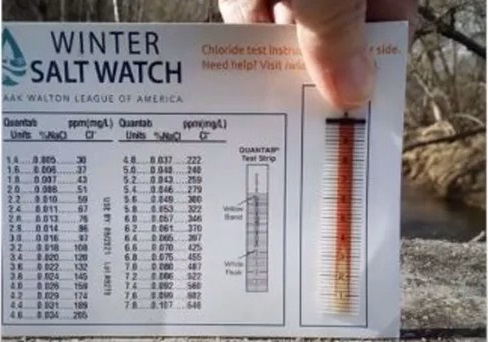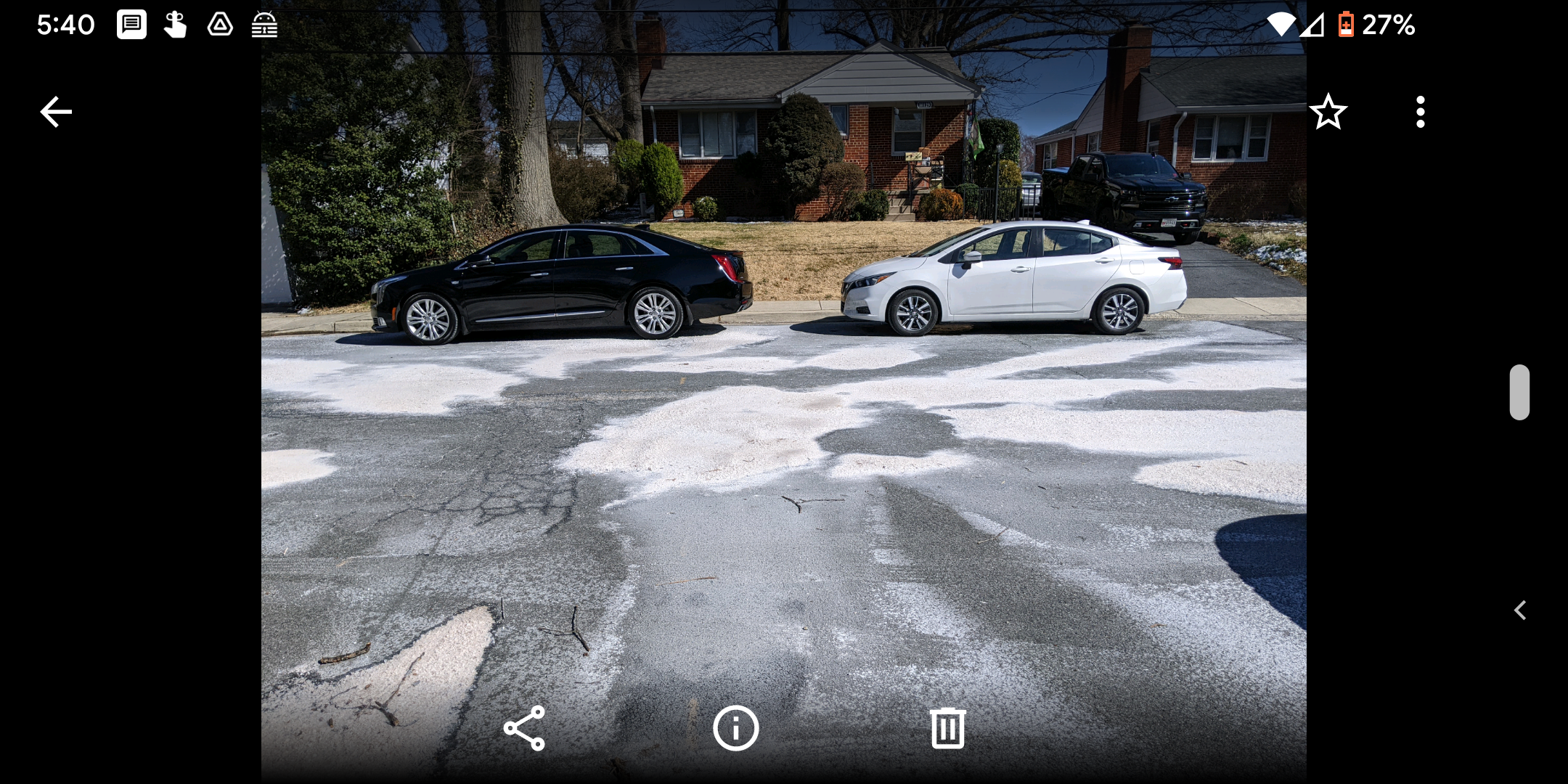WQ Committee to Continue Two SaltWatch Initiatives This Winter
Volunteers needed!
The FOSC water quality team is gearing up for the winter season. We’re monitoring Sligo Creek salt levels because excessive salt, from roadways, parking lots and sidewalks, can impair or even kill plants and animals in our watershed. We’re interested to know what the salt levels are during the winter so that we can compare them with salt levels throughout the year. Excessive salt use also impacts our drinking water which has been getting saltier over the last few decades. Learn more through our “Uncovering the hidden impact of salt” list of resources.
Last year’s results

Salt Watch results in Sligo and at other local test sites in winter 2021-22. Courtesy of the Izaak Walton League
In the Washington region overall, the Izaak Walton League reports that Salt Watch testing results from 2021/22 showed 34% of streams had chloride at levels considered toxic to wildlife. Across the eastern and midwest US, 18% tested at that level. Along Sligo and Long Branch, the average chloride levels at 14 test sites ranged from 216ppm to 507ppm, though FOSC volunteers’ data show that individual readings were recorded as high at 860+ppm.
1) Salt Watch Stream Monitoring

A Salt Watch test strip held alongside a testing card.
A program in which volunteers test the level of road salt in Sligo waters before, during and after a snow event. The FOSC Water Quality team provides the simple testing kits through a partnership with the Izaak Walton League. Committee members also provide guidance on selecting a location to test, and they coordinate the testing dates/times across the Sligo watershed. Check out the FOSC Salt Monitoring Initiatives page for more information and email [email protected] to express your interest in volunteering for winter 2022-2023.
2) Excessive Road/Sidewalk Salt Pile Reporting
If you see an excessive salt pile in the Sligo Creek Watershed, please send an email with location, date, time and a photo to [email protected]. We will try to get the County, State or responsible party to remove excessive salt piles before they go into Sligo Creek. View the watershed map on the Maps of Sligo Creek page.
3) Advocate for Brining of Roadways
Let County Executive Marc Elrich and Director of MCDOT Christopher Conklin know that you support brining of roadways. Brining is as effective as rock salt for deicing but, because of the way it is applied, uses ~60% less salt than a roadway treated with rock salt. It would help protect wildlife in the watershed and county-wide, and save money too.



